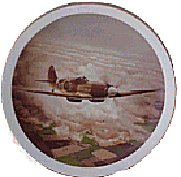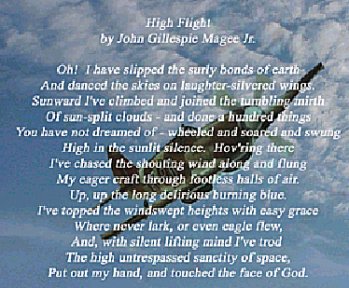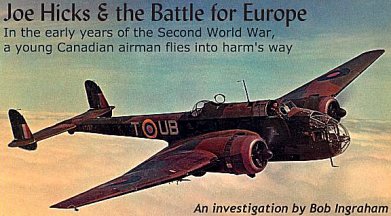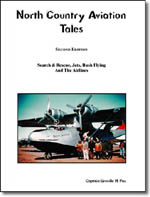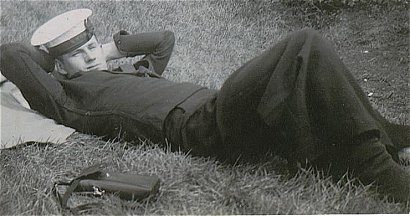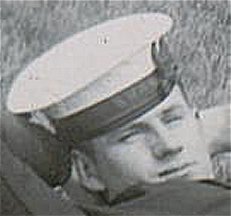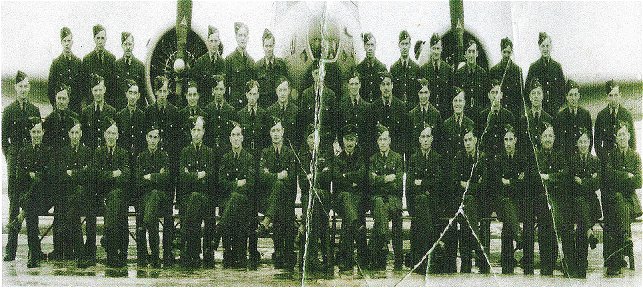Bill Hillman Presents
F.L.A.S.H.
Forces: Land ~ Air ~ Sea
~ Home
A MILITARY TRIBUTE WEBZINE
. . . AS YOU WERE . . .
www.hillmanweb.com/flash
Compiled by Bill Hillman
Wherein we share an eclectic assortment of
items gleaned from the
Internet, media and contributing readers.
Please send your ideas and contributions to
the
FLASH.
. . Editor and Webmaster: Bill Hillman: hillmans@wcgwave.ca

AUGUST 2002 Edition

WHAT
IS A VET?
Some veterans bear visible signs of their service: a missing
limb, a jagged scar, a certain look in the eye.
Others may carry the evidence inside them: a pin holding
a bone together, a piece of shrapnel in the leg - or perhaps another sort
of inner steel: the soul's ally forged in the refinery of adversity.
Except in parades, however, the men and women who have
kept America safe wear no badge or emblem.
You can't tell a vet just by looking.
What is a vet?
He is the cop on the beat who spent six months in Saudi
Arabia sweating two gallons a day making sure the armored personnel carriers
didn't run out of fuel.
He is the barroom loudmouth, dumber than five wooden planks,
whose overgrown frat-boy behavior is outweighed a hundred times in the
cosmic scales by four hours of exquisite bravery near the 38th parallel.
She (or he) is the nurse who fought against futility and
went to sleep sobbing every night for two solid years in Da Nang.
He is the POW who went away one person and came back another
- or didn't come back AT ALL.
He is the drill instructor who has never seen combat -
but has saved countless lives by turning slouchy, no-account rednecks and
gang members into Marines, and teaching them to watch each other's backs.
He is the parade-riding Legionnaire who pins on his ribbons
and medals with a prosthetic hand.
He is the career quartermaster who watches the ribbons
and medals pass him by.
He is the three anonymous heroes in The Tomb Of The Unknowns,
whose presence at the Arlington National Cemetery must forever preserve
the memory of all anonymous heroes whose valor dies unrecognized with them
on the battlefield or in the ocean's sunless deep.
He is the old guy bagging groceries at the supermarket
- palsied now and aggravatingly slow - who helped liberate a Nazi death
camp and who wishes all day long that his wife were still alive to hold
him when the nightmares come.
He is an ordinary and yet an extraordinary human being
- a person who offered some of his life's most vital years in the service
of his country, and who sacrificed his ambitions so others would not have
to sacrifice theirs.
He is a soldier and a savior and a sword against the darkness,
and he is nothing more than the finest, greatest testimony on behalf of
the finest, greatest nation ever known.
So remember, each time you see someone who has served
our country, just lean over and say Thank You. That's all most people need,
and in most cases it will mean more than any medals they could have been
awarded or were awarded.
Two little words that mean a lot, "THANK YOU".
It's the soldier, not the reporter,
Who gave us our freedom of the press.
It's the soldier, not the poet,
Who gave us our freedom of speech.
It's the soldier, not the campus organizer,
Who gave us our the freedom to demonstrate.
It's the soldier, Who salutes the flag,
Who serves others with respect for the flag,
And whose coffin is draped by the flag,
Who allows the protestor to burn the flag."
Father Denis Edward O'Brien, USMC
TWO STORIES
STORY NUMBER ONE:
World War II produced many heroes. One such man
was Lieutenant Commander Butch O'Hare. He was a fighter pilot assigned
to an aircraft carrier Lexington in the South Pacific. One day his entire
squadron was sent on a mission. After he was airborne, he looked
at his fuel gauge and realized that someone had forgotten to top off his
fuel tank. He would not have enough fuel to complete his mission
and get back to his ship. His flight leader told him to return to
the carrier. Reluctantly he dropped out of formation and headed back to
the fleet. As he was returning to the mother ship, he saw something that
turned his blood cold.
A squadron of Japanese bombers were speeding their way
toward the American fleet.
The American fighters were gone on a sortie and the fleet
was all but defenseless. He couldn't reach his squadron and bring them
back in time to save the fleet. Nor, could he warn the fleet of the
approaching danger. There was only one thing to do. He must somehow
divert them from the fleet.
Laying aside all thoughts of personal safety, he dove
into the formation of Japanese planes. Wing-mounted 50 caliber's
blazed as he charged in, attacking one surprised enemy plane and then another.
Butch weaved in and
out of the now broken formation and fired at as many
planes as possible until finally all his ammunition was spent.
Undaunted, he continued the assault. He dove at
the planes, trying to at least clip off a wing or tail, in hopes of damaging
as many enemy planes as possible and rendering them unfit to fly. He was
desperate to do anything he
could to keep them from reaching the American ships.
Finally, the exasperated Japanese squadron took off in another direction.
Deeply relieved, Butch O'Hare and his tattered fighter limped back to the
carrier. Upon arrival he reported in and related the event surrounding
his return. The film from the camera mounted on his plane told the tale.
It showed the extent of Butch's daring attempt to protect
his fleet. He had destroyed five enemy bombers. That was on
February 20, 1942, and for that action he became the Navy's first Ace of
WWII and the first Naval Aviator to win the Congressional Medal of Honor.
A year later Butch was killed in aerial combat at the age of 29.
His home town would not allow the memory of that heroic action die.
And today, O'Hare Airport in Chicago is named in tribute to the courage
of this great man.
So the next time your in O'Hare visit his memorial with
his statue and Medal of Honor. It is located between terminal 1 and
2.
STORY NUMBER TWO:
Some years earlier there was a man in Chicago called Easy
Eddie. At that time, Al Capone virtually owned the city. Capone wasn't
famous for anything heroic. His exploits were anything but praiseworthy.
He was, however,
notorious for enmeshing the city of Chicago in everything
from bootlegged booze and prostitution to murder.
Easy Eddie was Capone's lawyer and for a good reason.
He was very good! In fact, his skill at legal maneuvering kept Big Al out
of jail for a long time. To show his appreciation, Capone paid him
very well. Not only was the money big; Eddie got special dividends.
For instance, he and his family occupied a fenced-in mansion with live-in
help and all of the conveniences of the day. The estate was so large
that it filled an entire Chicago City block.
Eddy had a son that he loved dearly. Eddy saw to
it that his young son had the best of everything; clothes, cars,
and a good education. Nothing was withheld. Price was no object.
And, despite his involvement with organized
crime, Eddie even tried to teach him right from wrong.
Yes, Eddie tried to teach his son to rise above his own sordid life.
He wanted him to be a better man than he was.
Yet, with all his wealth and influence, there were two
things that Eddie couldn't give his son. Two things that Eddie sacrificed
to the Capone mob that he could not pass on to his beloved son: a good
name and a good
example. One day, Easy Eddie reached a difficult
decision. He had to rectify all the wrong that he had done.
He would go to the authorities and tell the truth about Scar-face Al Capone.
He would try to clean up his tarnished name and offer his son some semblance
of integrity. To do this he must testify against The Mob, and he
knew that the cost would be great. So, he testified. Within the year,
Easy Eddie's life ended in a blaze of gunfire on a lonely Chicago Street.
He had given his son the greatest gift he had to offer at the greatest
price he would ever pay.
What do these two stories have to do with one another?
Well, Butch O'Hare was Easy Eddie's son.
The Story of the Spitfire
By Mike
Stallybrass
NORTH COUNTRY AVIATION TALES: SEARCH & RESCUE,
JETS, BUSH FLYING AND THE AIRLINES is Captain Greville H. Fox's autobiography
of a life dedicated to the advancement of the field of aviation.
"Beginning with some wartime experiences in World War
II and later in Korea, my career moved into the civilian realm," says Fox.
"I flew a passenger version of the wartime Canso amphibian flying boat
on the DEW line in the summer months, and DC3s and other aircraft after
freeze-up. I also spent some time in Alaska and Africa as a representative
for the Link Flight Simulation Company, often using my own all-weather
Beech 18."
Fox's amazing tales include a story of how he was forced
to land in a blizzard on Smith Arm of Great Bear Lake completely on instruments,
and his subsequent survival without food for four days.
"I also remember a mishap with the Canso in a summer exploration
trip on the Arctic Ocean, 600 miles from base, when a sheared bolt wouldn't
allow us to retract the undercarriage," says Fox. "Dangerous and difficult
repairs were required to let us make an ocean take-off, rather than risking
me and the crew perishing on the ice fields north of the mainland."
NORTH COUNTRY AVIATION TALES: SEARCH & RESCUE, JETS,
BUSH FLYING AND THE AIRLINES was initially written for fellow pilots, but
Fox soon found a readership in the general public, for which he revised
and wrote this second edition.
Because airline pilots must maintain high physical standards,
Fox explains that most pilots study up for subsequent careers while still
flying. "Although my main love was aviation, I have done plenty of different
things: computer maintenance technician, mechanics teacher, building contractor,
trucker, upholsterer, even civil servant."
Greville H. Fox is now 83 and lives in Nanaimo, British
Columbia.
Murphy's Law II
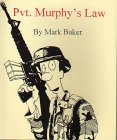
Pvt.
Murphy's Law
ISBN: 0967935709
Pub. Date: August 1, 1999
The Army Weather Corollaries
Inclement weather always begins AFTER you've already done
PT.
A sudden downpour always occurs at the end of a summer
field exercise--just in time coat all your equipment and camouflage with
mud.
The best beach weather always occurs when you are in
the field wearing MOPP 4.
There is no such thing as a blue sky during a company
picnic.
There is no such thing as a cloudy sky when your unit
needs to infiltrate enemy territory.
Road conditions are always red when it's time to convoy
home.
Motor pools are always 20 degrees warmer than the rest
of the post during the summer and 50 degrees colder in the winter.
Army training areas exist in a constant state of weather
flux controlled by a deity with a truly cruel sense of humor--How do you
think we got them so cheap?
The peak of Mt. Everest would flood if an Army unit was
told to set up on it.
Hell really would freeze over if someone decided to conduct
an exercise there.
The Port-a-Potty Postulate states that the likelihood
of a hurricane, sandstorm, tsunami, or blizzard occurring immediately over
your location is directly related to how bad you need to get to the portajohns
at the other side of the campsite in the middle of the night.
The temperature always rises to 70 degrees AFTER you
put on two layers of polypros, your bear suit, and all of your Gortex.
If you whine about the weather, someone else will always
whine louder.
Rules of the Rucksack
1. No matter how carefully you pack, a rucksack is always
too small.
2. No matter how small, a rucksack is always too heavy.
3. No matter how heavy, a rucksack will never contain
what you want.
4. No matter what you need, it's always at the bottom.
Phillip's Law:
Four-wheel-drive just means getting stuck in more inaccessible
places.
Weatherwax's Postulate:
The degree to which you overreact to information will
be in inverse proportion to its accuracy.
Least Credible Sentences:
1. The check is in the mail.
2. The trucks will be on the drop zone.
3. Of course I'll respect you in the morning.
4. I'm from the government and I'm here to help you.
THE LIGHT SIDE
RAF Flight Log
In the RAF it is customary for fighter pilots to fill
in a flight log at the end of each sortie. The engineers then check the
log to see if the pilot has made any comments about the plane. One such
exchange reads :
PILOT : 'cockpit dusty, port engine missing'.
ENGINEER : 'Cockpit cleaned. Port engine cowling removed,
engine found'.
USAF Maintenance Logs
Some (supposedly) actual maintenance complaints submitted
by US Air Force pilots and the replies from the maintenance crews...
Problem: "Left inside main tyre almost needs replacement."
Solution: "Almost replaced left inside main tyre."
Problem: "Test flight OK, except autoland very rough."
Solution: "Autoland not installed on this aircraft."
Problem #1: "#2 Propeller seeping prop fluid."
Solution #1:"#2 Propeller seepage normal."
Problem #2: "#1, #3, and #4 propellers lack normal seepage."
Problem: "The autopilot doesn t."
Signed off: "IT DOES NOW."
Problem: "Something loose in cockpit."
Solution: "Something tightened in cockpit."
Problem: "Evidence of hydraulic leak on right main landing
gear."
Solution: "Evidence removed..."
Problem: "DME volume unbelievably loud."
Solution: "Volume set to more believable level."
Problem: "Dead bugs on windshield."
Solution: "Live bugs on order."
Problem: "Autopilot in altitude hold mode produces a 200
fpm descent."
Solution: "Cannot reproduce problem on ground."
Problem: "IFF inoperative."
Solution: "IFF inoperative in OFF mode."
Problem: "Friction locks cause throttle levers to stick."
Solution: "That s what they re there for."
Problem: "Number three engine missing."
Solution: "Engine found on right wing after brief search."
Control Tower Time
On some air bases the Air Force is on one side of the
field and civilian aircraft use the other side of the field, with the control
tower in the middle.
One day on just such a field the tower received a call
from an aircraft asking, "What time is it?" The tower responded, "Who is
calling?"
The aircraft replied, "What difference does it make?"
The tower replied "It makes a lot of difference. If it
is an American Airlines Flight, it is 3 o'clock. If it is an Air Force,
it is 1500 hours. If it is a Navy aircraft, it is 6 bells. If it is an
Army aircraft, the big hand is on the 12 and the little hand is on the
3. If it is a Marine Corps aircraft, it's Thursday afternoon. If it's National
Guard, it's still a couple of hours until quitting time."
WWII
Trivia
1. The first German serviceman killed in the war
was killed by the Japanese (China, 1937), the first American serviceman
killed was killed by the Russians (Finland 1940), the highest ranking American
killed was Lt. Gen. Lesley McNair, killed by the US Army Air Corps. So
much for allies.
2. The youngest US serviceman was 12 year old Calvin
Graham, USN. He was wounded and given a Dishonorable Discharge for lying
about his age. (His benefits were later restored by act of Congress)
3. At the time of Pearl Harbor the top US Navy command
was Called CINCUS (pronounced "sink us"), the shoulder patch of the US
Army's 45th. Infantry division was the Swastika, and Hitler's private train
was named "Amerika". All three were soon changed for PR purposes.
4. More US servicemen died in the Air Corps than
the Marine Corps. While completing the required 30 missions your chance
of being killed was 71%.
5. Generally speaking there was no such thing as an average
fighter pilot. You were either an ace or a target. For instance Japanese
ace Hiroyoshi Nishizawa shot down over 80 planes. He died while a passenger
on a cargo plane.
6. It was a common practice on fighter planes to
load every 5th round with a tracer round to aid in aiming. This was a mistake.
Tracers had different ballistics so (at long range) if your tracers were
hitting the target 80% of your rounds were missing. Worse yet tracers instantly
told your enemy he was under fire and from which direction. Worst of all
was the practice of loading a string of tracers at the end of the belt
to tell you that you were out of ammo. This was definitely not something
you wanted to tell the enemy. Units that stopped using tracers saw their
success rate nearly double and their loss rate go down.
7. When allied armies reached the Rhine the first
thing men did was pee in it. This was pretty universal from the lowest
private to Winston Churchill (who made a big show of it) and Gen. Patton
(who had himself photographed in the act).
8. German Me-264 bombers were capable of bombing
New York City but it wasn't worth the effort.
9. German submarine U-120 was sunk by a malfunctioning
toilet.
10. Among the first "Germans" captured at Normandy
were several Koreans. They had been forced to fight for the Japanese Army
until they were captured by the Russians and forced to fight for the Russian
Army until they were captured by the Germans and forced to fight for the
German Army until they were captured by the US Army.
11. Following a massive naval bombardment 35,000
US and Canadian troops stormed ashore at Kiska. 21 troops were killed in
the firefight. It would have been worse if there had been any Japanese
on the island.
Back to the Top
MAILSTROM
DeHAVILLAND CANADA
Just a note to let those Canadian museums who may be
interested know that we're offering for sale/trade a DeHavilland Canada
built Grumman Tracker. The aircraft is an ex-RCAF / DND aircraft and is
not airworthy but it is complete. The reason for the email is that we'd
like to see the aircraft go to a Canadian museum so before offering it
on the open market, we're contacting the various groups to inform of the
aircraft's availability and that we have a reduced price and flexible purchase
options for those museums interested in acquiring the aircraft. Unfortunately
we can't donate the aircraft but we will look at all offers including trades
and we are willing to work with any museum interested in acquiring this
aircraft for their collection. For more information on the Tracker, please
see our website at http://www.historicair.com/aircraft/sale/tracker.htm.
Please note that the price listed on the ad is not the selling price for
Canadian museums. Contact us for the museum price or if you have any questions.
All the best,
Brian Rempel
Historic Aircraft Company ~ Richmond, BC ~ Canada
Tel: 1-604-277-2481
Cell: 1-604-315-3124
Email: brian@historicair.com
www.historicair.com
MYSTERY SAILOR
I must say that you have a pretty impressive website
there!...I was wondering if maybe you could help me?..My name is Tammy
Bain, and I live in Yarmouth, Nova Scotia. I have a photograph of
a young sailor, and I can't seem to get any info on his uniform.
The era is WWII. By looking at this photo, do you know anything about
it?...The letters are hard to read on the cap, and I orignally thought
it was HMCS, but it really doesn't look like a C. It resembles a
4, but I know that it can't be, so I assume it is an A. That would
be the Australian Navy. Would you have any idea on the uniform itself?..would
he be just a seaman, or is it a uniform that one would wear on leave?...I
really am trying to find out if this man is Canadian or not. The
reason I am wanting to know this is this photo was in my grandmother's
collection and it is possible that this man may be my grandfather, as he
is unknown. My mom was adopted in 1943 at the age of seven months.
Her mother said that her father was killed overseas, but not sure on the
truth of that, as she had told no-one that she was pregnant, and on any
documents it said "father unknown". We found my mom's family just
2 years ago, but her biological mom had died in 1975. She had married
in 1944, and had 3 boys there after. My mom now knows her brothers!..Anyway,
just so I don't write a novel here, any help you could give would be greatly
appreciated, as I have not came up with anything concrete. I have
sent the photo to lots of people including people in Australia, and they
seem to think that it is Australian Navy. Well, not sure if this
was the place to write you with inquiries, so hope I didn't bother you
too much. Thankyou for your time. By the way, on the back of
the original photo, it says "To Ruth, Love Fred"...not that it helps, but
what the hay..
Sincerely,
Tammy Bain
